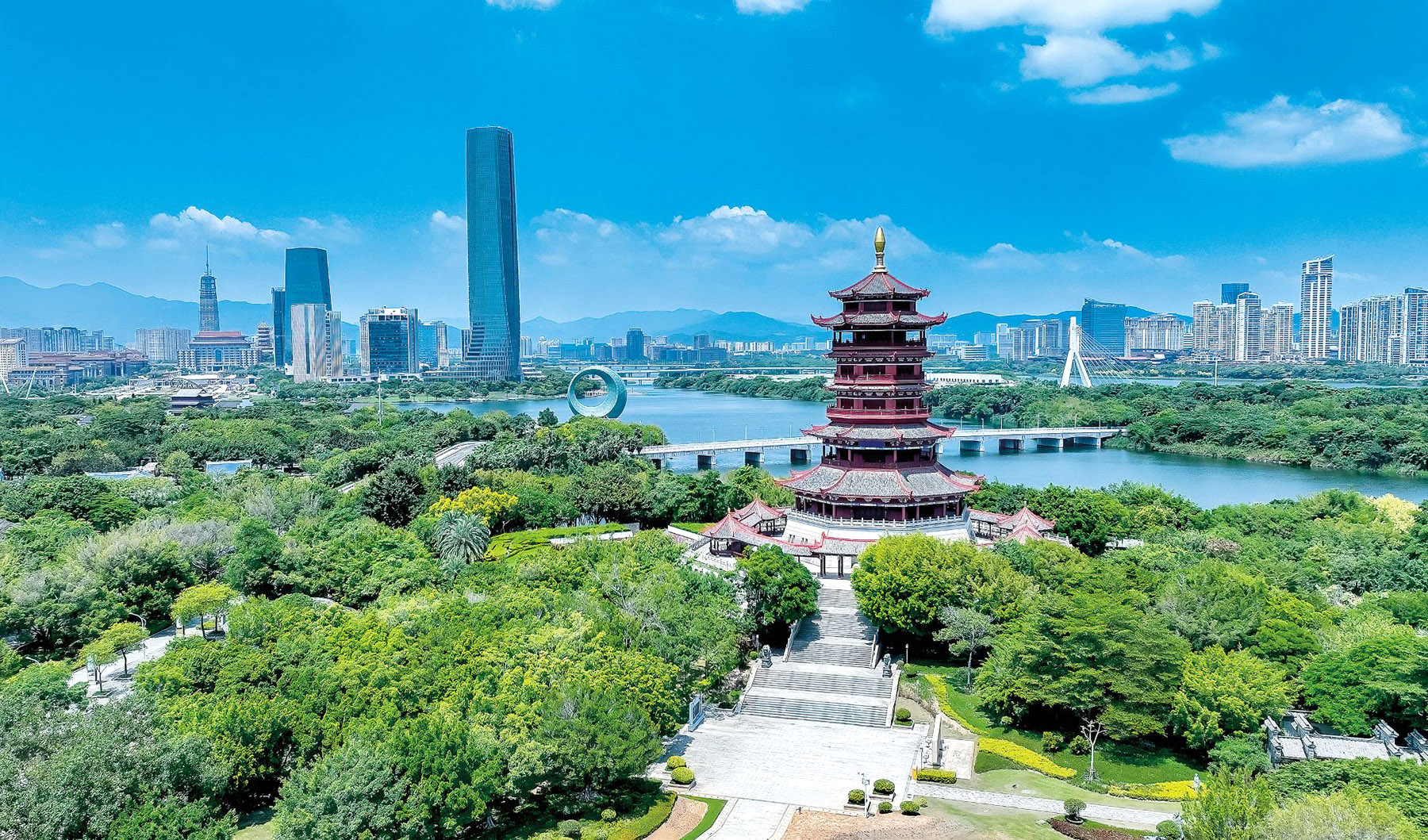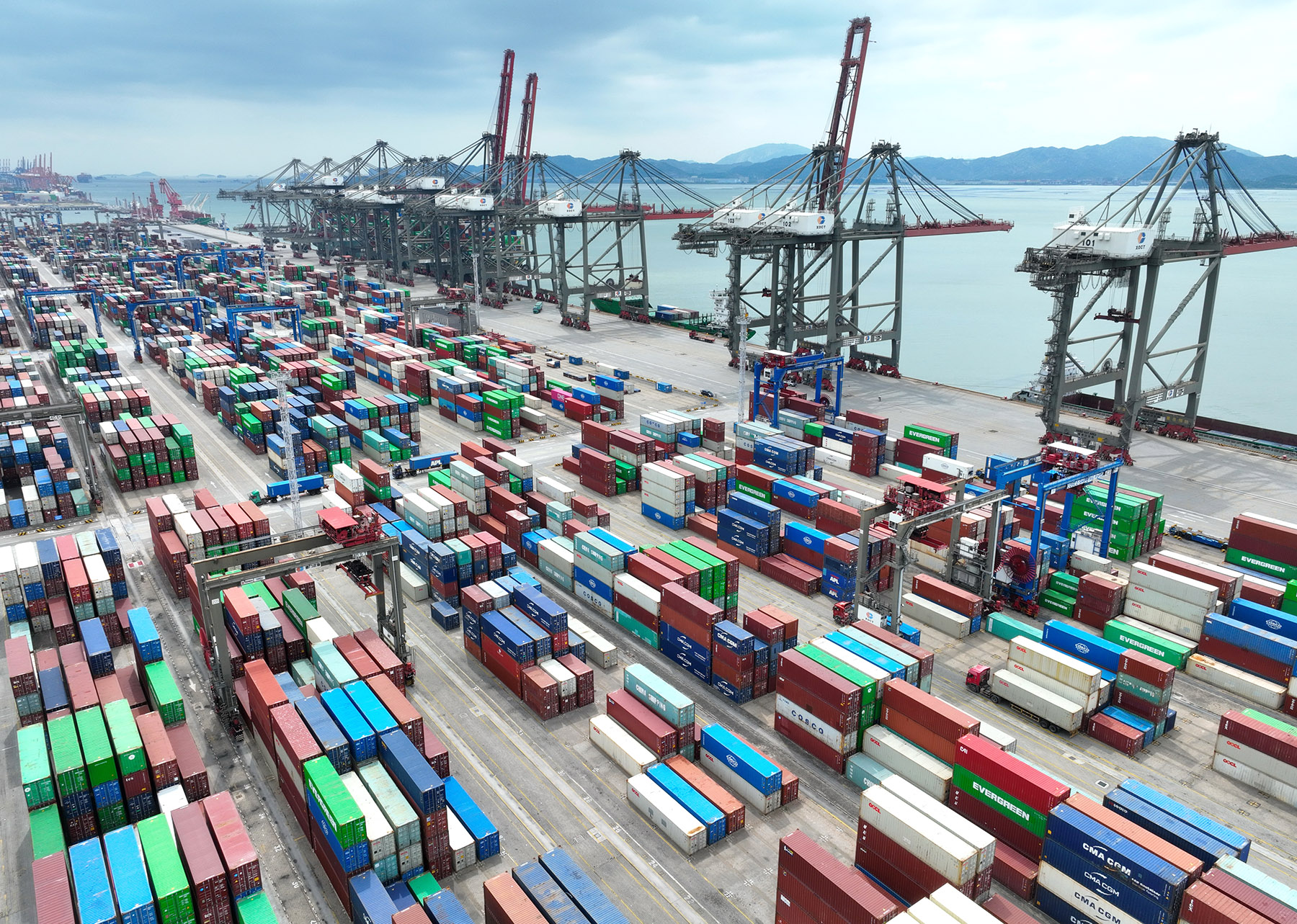Pioneering road map put environmental protection at heart of urban development

At dawn, beside the lush, green Yundang Lake, joggers tread lightly along the lakeside path, newlyweds capture memories in wedding photos, and migratory birds skim the water's surface, sending ripples across the lake.
Today, the lake, with its sparkling waters and vibrant ecosystem, has become a "living room" for the coastal city of Xiamen and a green landmark.
However, more than 40 years ago, the scene was starkly different. At that time, the lake was still an inner bay fishing port, into which untreated domestic sewage and industrial wastewater were discharged for years. The lake became black, foul-smelling and devoid of aquatic life, and locals referred to it as a "dead lake".
In 1985, Xi Jinping, then 32 years old, arrived in Xiamen to serve as executive vice-mayor. From the outset of his tenure, he adopted a long-term vision.
The following year, he led the formulation of the 1985-2000 Xiamen Economic and Social Development Strategy, which laid out an ambitious blueprint for the city's development over the next 15 years.
READ MORE: Xi urges Fujian to play pioneering role in China's modernization
Personally spearheaded by Xi, who is now Chinese president and general secretary of the Communist Party of China Central Committee, the strategy was developed by a task force comprising over 100 experts, scholars and staff members from over 10 institutions. After 18 months of in-depth research and repeated deliberations, the team produced a systematic report of over 200,000 words.
The report placed environmental protection at the heart of urban development and issued a stern warning about pollution in Yundang Lake: "It must be given high priority and addressed urgently."
A striking line from the strategy reads: "Xiamen's ecological environment is truly superior. While developing the special economic zone, we must guard against pollution and maintain ecological balance, to preserve and create a beautiful living and production environment for the people of Xiamen and future generations."
The document offered a comprehensive plan for Xiamen's development, covering economic development, industrial layout, institutional reform, sci-tech innovation, ecological protection, cultural advancement, and education and talent development. It proposed the preliminary idea of building a free port, initiating a new chapter in Xiamen's modernization.
"Looking back now, the strategy was visionary and provided an answer to the question of how to develop the special economic zone," said Zheng Jinmu, former deputy director of the then Xiamen municipal planning commission and a contributor to the drafting of the report.
"Back in the 1980s, Xi Jinping showed a remarkable sense of mission, willing to lay the groundwork and plant the seeds for future generations. That spirit is truly admirable," Zheng said.
Liu Lianzhi, a former associate professor at Xiamen University who also participated in drafting the report, recalled that at the time, developing the Xiamen Special Economic Zone was like "crossing the river by feeling the stones".
"In this process, Xi Jinping was the one leading the people of Xiamen across the river," Liu said. "One of the most important lessons from this strategy is that long-term, sustained and actionable planning is critical. Planning must be realistic and tailored to local conditions."
Early embodiment
The strategy marked not only a pivotal starting point for Xiamen's urban planning, but also an early embodiment of Xi's consistent governance philosophy. During his tenure in Xiamen, Xi advocated an ecologically oriented approach — a forerunner to the concept that "lucid waters and lush mountains are invaluable assets".
In March 1988, Xi chaired a special meeting to address the pollution of Yundang Lake.
Despite severe funding constraints, the meeting concluded with a decision that the city would allocate 10 million yuan ($1.4 million) annually over the next two years — a sum equivalent to one-tenth of the city's total investment in infrastructure at the time, and more than the combined total spent in the previous decade.
Xi also introduced an innovative policy to guide the systematic restoration of Yundang Lake: Govern by the law, intercept sewage, dredge and reinforce the banks, rejuvenate the water body and beautify the environment.
The comprehensive approach not only revived the lake, but also set a replicable model for lake management across the country.
"At that time, Xiamen's economic foundation was weak, and development was urgent. Some officials preferred to invest in projects with direct economic returns. But Xi emphasized factoring in ecological considerations — a farsighted strategic vision that truly stood out," said Zhang Yihe, former deputy director of the then Xiamen municipal utilities bureau.
Subsequently, Xiamen continued with five phases of comprehensive lake restoration, investing a total of approximately 1.99 billion yuan and delivering on the consistent long-term vision.
The efforts have yielded remarkable results. Today, the water quality of Yundang Lake has significantly improved, and its biodiversity continues to rise. In recent years, 63 species of swimming organisms and around 200 types of plankton have been recorded in the lake area, alongside 15 orders, 37 families and 98 species of birds.
The transformation of Yundang Lake is a vivid illustration of the strategy's vision becoming reality.
"This strategy can be seen as a comprehensive document that encapsulates many of General Secretary Xi's innovative ideas and practical explorations during his tenure in Xiamen, serving as a vital source of inspiration for the city's bold journey of reform and opening-up," said Cui Yonghui, Party secretary of Xiamen.
"The strategy throughout emphasizes concepts like innovation, green development and openness. It not only scientifically planned the key priorities of economic development, but also made farsighted deployments in science and technology, ecological protection, cultural advancement and education," Cui added.
"This reflects General Secretary Xi's early view that modernization is not only about the economy, but also requires coordinated progress across science and technology, culture, society and ecology."
Under the guidance of the strategy, Xiamen has made major developmental strides. Between 1985 and 2024, Xiamen's GDP grew at an average annual rate of 13.8 percent — 5.1 percentage points higher than the national average, and 2.8 percentage points higher than the provincial average.
One of the most visionary parts of the strategy was its emphasis on expanding opening-up. It proposed that Xiamen "expand opening-up and promptly implement certain free port policies" — a move seen as a key breakthrough that laid the conceptual foundation for the later development of the Xiamen Area of China (Fujian) Pilot Free Trade Zone.

Confidence bolstered
Following this strategic vision, the Xiamen pilot FTZ was launched and rapidly flourished.
"Today, the development of the pilot FTZ follows the direction pointed out by General Secretary Xi Jinping. We are strengthening confidence in high-level opening-up and advancing institutional innovation to support high-quality development," said He Dongning, head of the FTZ's administrative committee.
To date, more than 42,000 new enterprises have registered in the FTZ, with foreign trade growing more than 12 percent annually. In 2024, the zone contributed 12.4 percent of Xiamen's GDP, 35.5 percent of its foreign trade, and 30.6 percent of its utilized foreign capital — all on just 2.6 percent of the city's land.
It also has become a key hub for high-level openness and high-quality development, hosting the largest third-party aircraft maintenance base in China.
The strategy also laid out a blueprint for industrial development. It proposed "transforming traditional industries with electronic and other high technologies, developing emerging sectors, and forming a technological complex." Over the past 40 years, Xiamen's electronic information industry has seen explosive growth, with output rising from 487 million yuan in 1985 to 227.9 billion yuan in 2024 — a 466-fold increase.
"Xiamen's high-quality development and aesthetic appeal have provided strong support for enterprises," said Xu Jun, vice-president of Meitu Inc, a tech company known for its photo-editing apps.
"Our offices face the sea, inspiring creativity among our designers. It's a workplace that activates inspiration through ecology. Xiamen's natural artistic temperament makes it fertile ground for creative talent," Xu said.

Vital link
During his tenure in Xiamen, Xi personally led efforts to establish Xiamen Airlines, facilitating solutions to critical issues such as aircraft procurement and capital flow. Today, the airline stands as a vital air link fostering exchanges across the Taiwan Strait.
As of May 2025, the company has hired 304 flight attendants from Taiwan — the highest number among airlines on the Chinese mainland.
"Xiamen Airlines has become our 'second home,'" said Chen Yuxuan, a senior flight attendant from Taiwan.
"More and more of our colleagues from Taiwan are putting down roots in Xiamen. Looking ahead, we will remain true to General Secretary Xi's instructions and continue to serve as a bridge in the skies, advancing integrated development across the Taiwan Strait."
The development goal set in the strategy was "to make Xiamen an economically prosperous, technologically advanced, environmentally beautiful port city with comprehensive urban functions and a relatively affluent population".
ALSO READ: Chinese, Brazilian twin cities bolster ties
Today, many of its ideas have been realized, and the concepts it proposed continue to embody the essence of Chinese governance.
China is now advancing the formulation of its 15th Five-Year Plan (2026-30), and the Xiamen experience is once again drawing wide attention.
In instructions made regarding the 15th Five-Year Plan, Xi emphasized the need to uphold scientific, democratic and law-based decision-making, integrate top-level design with seeking advice from the public, enhance research and discussions, and build broad consensus.
Zheng Jinmu, the former planning commission official, recalled how Xi led the drafting of the strategy, personally traveling to Beijing to solicit expert opinions, organizing international seminars, visiting Singapore for study tours, and gathering wisdom from all sides to formulate a well-structured and scientifically grounded strategy.
"The strategy depicted a highly scientific and forward-looking blueprint, providing clear direction for the development of the Xiamen Special Economic Zone. It continues to offer important guidance to this day," he said.
Contact the writers at xuwei@chinadaily.com.cn


